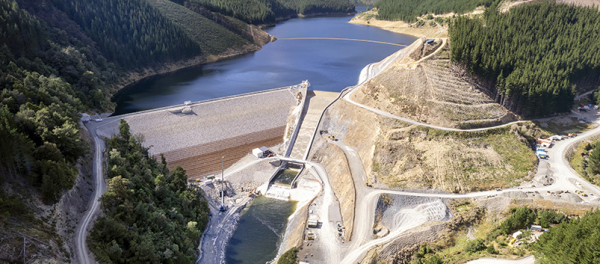Over the last few months, as we get closer to the Waimea Dam being completed, there have been many questions and opinions shared as to how the dam works.
It is actually very simple.
The dam’s single purpose is to maintain and support the flow of water in the rivers that ultimately support the Waimea Plains.
 These rivers, the Lee and the Wairoa, feed into what becomes the Waimea River. This supplies the aquifers that provide water to everyone on the Plains.
These rivers, the Lee and the Wairoa, feed into what becomes the Waimea River. This supplies the aquifers that provide water to everyone on the Plains.
The health and supply of these aquifers, while supplemented by groundwater, is mainly reliant on the river’s health.
The Waimea River has been slowly degrading over the years, and a continued and sustained flow is essential to the river’s long-term future.
Most of the water used by the urban, commercial – including horticulture, and other users on the Waimea Plains is taken using bores extracting water from the aquifers.
That flow and health of the aquifers also prevent the intrusion of salt water from the estuary into the groundwater aquifers.
The dam is projected to provide this support to the river for the next 100 years, which in turn is expected to provide enough of the most basic of resources for the growth in the area for the same amount of time. The system is designed to support the river up to a 1 in 50-year drought, and even then, there will be access to water albeit with some restrictions.
There are no pipes directly from the dam to the townships or commercial properties on the plains. However, the flow from the dam will still support the urban areas of Richmond, Māpua, Ruby Bay, Brightwater, Hope and Wakefield as they use bores in the Waimea Plains.
The Council is the largest shareholder in the dam due to its need to provide water to urban areas and industrial users. The Council holds a consent for its water needs, much like any of the horticulture interests who have their own bores.
As the dam is yet to be completed, all water users, including the Council’s supply, are still subject to pre-dam consent conditions – which means we are able to take less water than what current demand requires, hence the recent water restrictions.
Once the dam is completed and handed over, there will be a noticeable increase in how much water can be taken – so in future, there will be a much higher threshold for introducing water restrictions.
Essentially the dam is designed to provide century-long support to the rivers as they support the urban and commercial demand for water on the Plains.
Last modified: